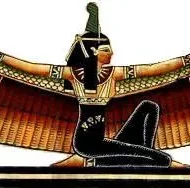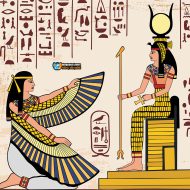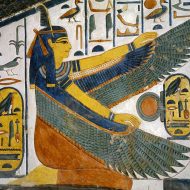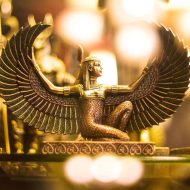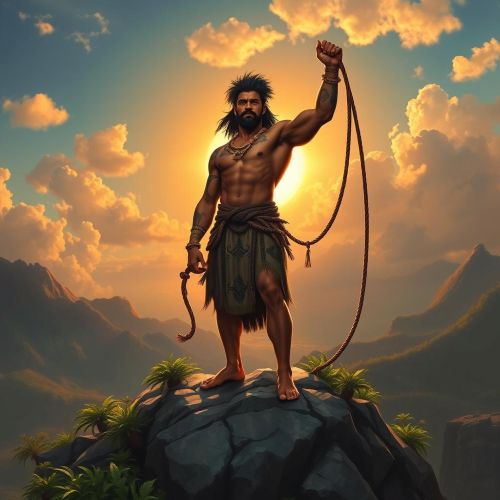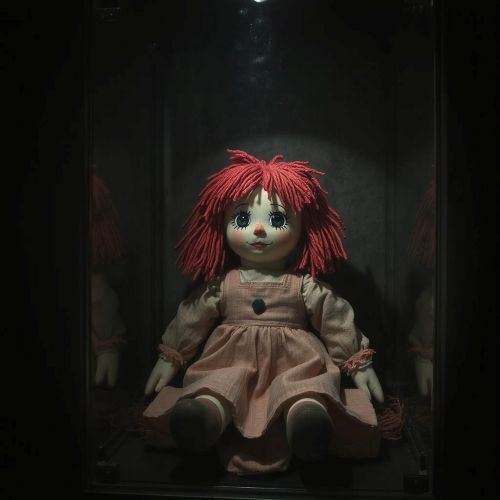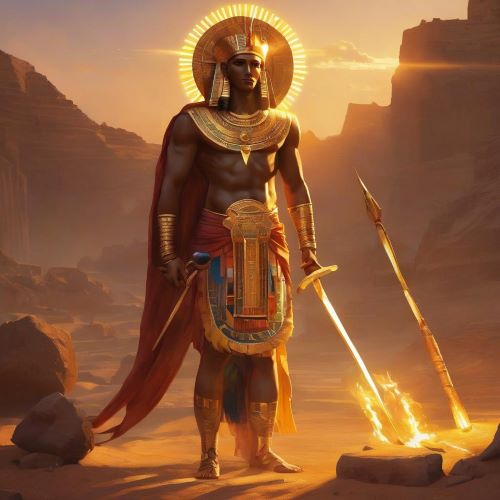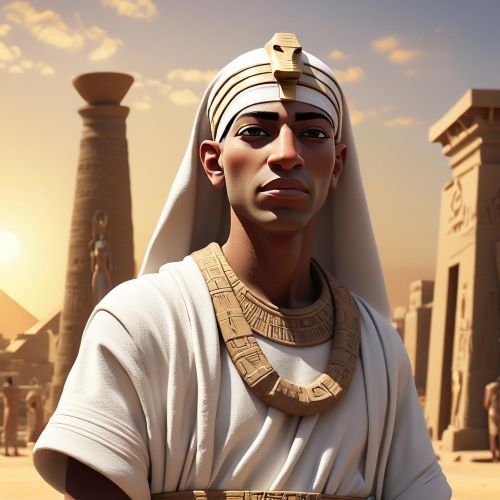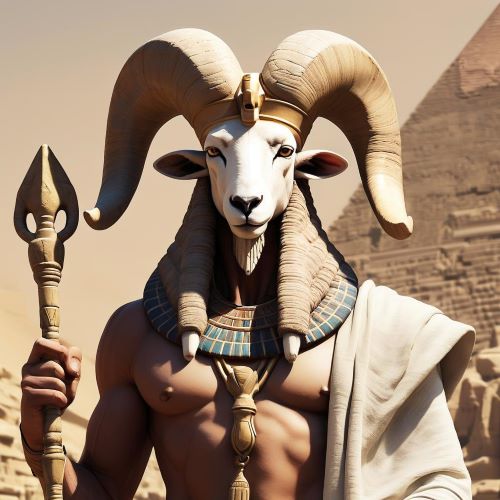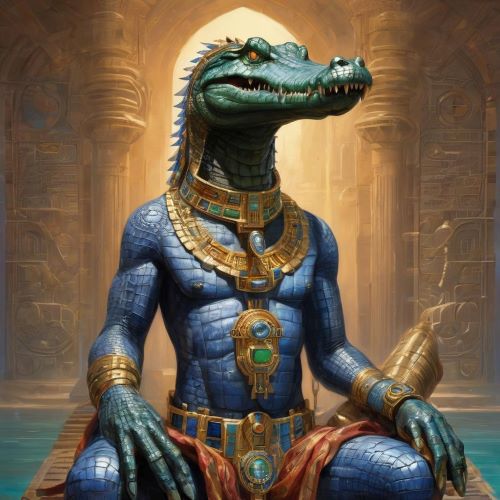Ma’at : The God of Justice
Listen
At a glance
| Description | |
|---|---|
| Origin | Egyptian Mythology |
| Classification | Gods |
| Family Members | Ra (Father), Thoth (Husband) |
| Region | Egypt |
| Associated With | Justice, Death, Fairness |
Ma’at
Introduction
In the religion of ancient Egypt, Maat was regarded as the personification of justice and truth. She was associated with Thoth, who was the god of wisdom. During a ceremony known as the “Judgment of Osiris,” which was held for the god of the dead, the deceased’s heart was weighed in a scale that was balanced by Maat. This was a test of conformity to the proper values.
The divine order known as maat was established at the beginning of Egypt’s history. It was then reaffirmed at the ascension of the new king. In its role as the divine order, the king was able to play the role of the sun god, who is the closest link to Maat.
Maat is regarded as one of the most influential and unique deities in ancient Egypt. She represents justice, harmony, truth, and order in the universe and in people. She is the daughter of the sun god Ra and the god of wisdom, Thoth. She also serves as the guardian of cosmic order and the judge of the dead. Even though some aspects of the maat and kingship were criticized and changed, these institutions were still fundamental to Egyptian thought and culture.
Physical Traits
She is often depicted as a winged woman with a white ostrich feather on her head. In some paintings, she is depicted with wings, while others show her sitting or standing with the feather on her head. Ma’at typically appears as a woman with a body that’s made out of human flesh and an ostrich feather on its head. She wears white clothes and carries an ankh and a scepter, which symbolize life and power.
Sometimes, she is depicted as a winged woman with wings, which is a representation of her role as the guardian of creation. The feather of Ma’at was also a part of a ceremony that was held in the afterlife. During this ceremony, the deceased’s heart was weighed in a scale that was balanced by the feather.
Family
It is believed that Ma’at emerged from Ra’s mouth during the creation stage, along with her twin brother, Shu. When the world was created, she helped Ra communicate with the world and established the seasons and cycles of nature.
Thoth and Maat are often associated with one another. They are regarded as being the parents of the goddess of measurement and writing, who is known as Seshat.
Maat is linked with various goddesses who share similar attributes. Some of these include Isis, who is regarded as the goddess of healing and magic, Hathor, who is the goddess of love, and Sekhmet, who is the goddess of vengeance. Nekhbet is the representative of Upper Egypt.
Other names
Ma’at was also known as Mayet or Maat.
Powers and Abilities
Maat is more than just a goddess. She is also a principle, a way of life, and a concept. She embodies the cosmic order, which governs everything from the stars to the actions of humans. As a moral code, she rules right from wrong, and she balances conflict and chaos. Maat was regarded as an important deity for the ancient Egyptians, who believed that it was necessary for their civilization’s survival. They also needed to maintain their good fortune and follow her rules to protect their society and ward off any threats.
Ma’at was not only the source of order and justice in life, but also in death. She was the judge of the dead who determined their fate in the afterlife. She presided over the weighing of the heart ceremony, where she weighed the heart of the deceased against her feather on a scale. The heart was considered to be the seat of one’s soul and personality. It recorded all the deeds and thoughts of one’s life, good and bad. If the heart was lighter than the feather, it meant that the person had lived a virtuous life in accordance with Ma’at. The person would then be allowed to enter the paradise of the Field of Reeds, where they would enjoy eternal peace and happiness.
If the heart was heavier than the feather, it meant that the person had lived a wicked life in violation of Ma’at. The person would then be condemned to face Ammit, the devourer of the dead, a fearsome beast with the head of a crocodile, the body of a lion, and the hindquarters of a hippopotamus. The beast would swallow the heart and destroy the soul, leaving no hope for resurrection or redemption. To prepare for this judgment, the ancient Egyptians performed various rituals and practices to purify their hearts and souls. They mummified their bodies and buried them with amulets and spells to protect them from harm. They also wrote confessions and declarations of innocence on papyri or coffins, known as the Book of the Dead or the Book of Coming Forth by Day. These texts contained 42 negative confessions, where the deceased claimed to have not committed any sins against Ma’at. They also contained 42 assessors of Ma’at, who were minor deities who witnessed and verified the truthfulness of the confessions.
Modern Day Influence
The Egyptian goddess of justice and truth, known as Ma’at, has a few notable appearances in contemporary pop culture. In Assassin’s Creed: Origins, Ma’at is mentioned as a deity who helped create the Pieces of Eden, which can manipulate reality.
In Neil Gaiman’s American Gods, Maat is mentioned as a deity who came to the US with the immigrants. According to Gaiman, she is a woman who carries a feather on her head and weighs the dead’s hearts. Rick Riordan’s novel The Red Pyramid features a character named Ma’at, who is an Egyptian concept that can be manipulated. She represents the balance and order of the universe, and it is under threat from Chaos.
Related Images
Frequently Asked Questions
What is lorem Ipsum?
I am text block. Click edit button to change this text. Lorem ipsum dolor sit amet, consectetur adipiscing elit. Ut elit tellus, luctus nec ullamcorper mattis, pulvinar dapibus leo.
What is lorem Ipsum?
I am text block. Click edit button to change this text. Lorem ipsum dolor sit amet, consectetur adipiscing elit. Ut elit tellus, luctus nec ullamcorper mattis, pulvinar dapibus leo.
What is lorem Ipsum?
I am text block. Click edit button to change this text. Lorem ipsum dolor sit amet, consectetur adipiscing elit. Ut elit tellus, luctus nec ullamcorper mattis, pulvinar dapibus leo.
What is lorem Ipsum?
I am text block. Click edit button to change this text. Lorem ipsum dolor sit amet, consectetur adipiscing elit. Ut elit tellus, luctus nec ullamcorper mattis, pulvinar dapibus leo.
What is lorem Ipsum?
I am text block. Click edit button to change this text. Lorem ipsum dolor sit amet, consectetur adipiscing elit. Ut elit tellus, luctus nec ullamcorper mattis, pulvinar dapibus leo.

